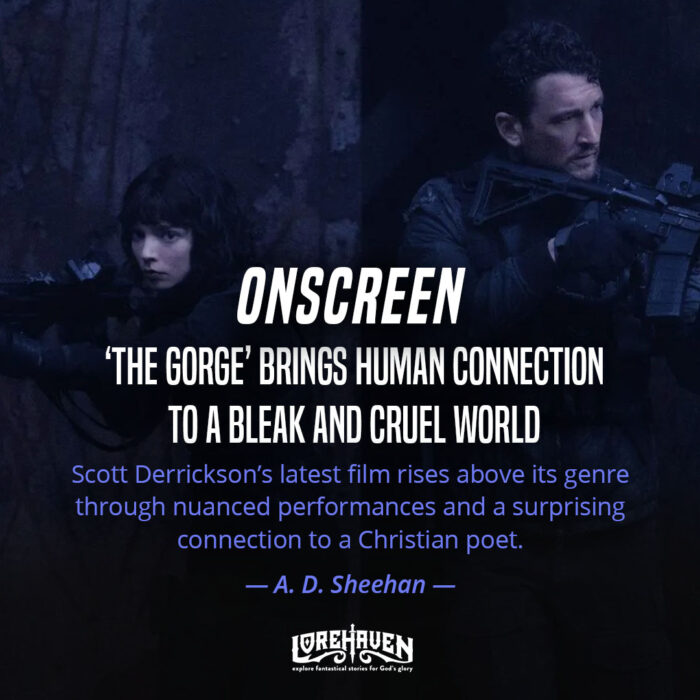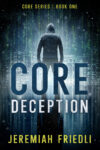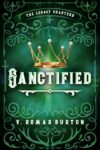Madeleine L’Engle on ‘Bad Religion’
If it’s bad art, it’s bad religion, no matter how pious the subject.
The release of A Wrinkle In Time has brought this quotation to the surface. It sounds profound and is, I think, deeply wrong, but I don’t want to attack a lone, disconnected sentence. It would be better to return the sentence to its proper context, attempt to understand it, and then attack it.
The statement is taken from Madeleine L’Engle’s Walking on Water: Reflections on Faith and Art. After some meandering, L’Engle expands the idea:
Basically there can be no categories as “religious” art and “secular” art, because all true art is incarnational, and therefore “religious”.
To understand what she means by incarnational, we must backtrack to an earlier passage, a sort of extended analogy that compares artists to the Virgin Mary at the Annunciation (it sounds less silly when L’Engle says it, but never doubt: It is really, in absolute and incontrovertible truth, just as silly):
[The] artist must be obedient to the work … I believe that each work of art … comes to the artist and says, “Here I am. Enflesh me. Give birth to me.” And the artist either says, “My soul doth magnify the Lord,” and willingly becomes the bearer of the work, or refuses; but the obedient response is not necessarily a conscious one.
The pithiest summation of all this is that art is religion. A more difficult, and perhaps truer, summation is that art is inherently religious because to create it is, consciously or unconsciously, a religious act – an act of obedience to the divine or, at least, to the transcendent. And this brings us back again to the original statement that to be guilty of bad art is to be guilty of bad religion.
Make no mistake: The guilt is real. L’Engle lightly comments in Walking on Water that the writer of a “shoddy novel” has “reject[ed] the obedience, tak[en] the easy way out.” So to write a shoddy novel is a moral failing. Your bad prose flows from your moral weakness and the holes in your plot darkly reflect the hole in your character.
The equation between bad religion and bad art, and between moral failure and artistic failure, is false. It is flat nonsense to believe that a bad story must come from disobedience to “the work” and never consider that it probably comes from the eternal gremlins of artistic endeavors, lack of time and lack of skill. I put great emphasis on skill, more than on any nebulously-rendered obedience; it’s real and practical and necessary. In art, as in sports, no emotion, belief, or effort is enough in itself. You must have the skill, too.
Art is not an obedient response to “the work” that, L’Engle imagines, somehow already exists and wants to be incarnated; it’s not a religious act. Art is work, in the same way that cooking a meal or building a bridge is work, and like all work, it can be done badly or it can be done well. Certainly the religion of the art can influence its quality. But to make the quality of a work’s religion synonymous with the quality of its art is as wrongheaded as judging love by its poetry. (And if we did judge love by its poetry, we would know from the greetings cards we have all given and received that the world is a cold, dark, loveless place.)
There is excellent art that is bad religion. There is bad art that is excellent religion. Religion and art are not so closely bound as to make one bad or good as the other is bad or good. To think they are is bad religion.





































I agree that it feels a little weird to think of art/writing as intrinsically religious, though I guess it depends on what definition someone is using. The fact that she says all that makes it seem like art/writing is so important to her that she’s willing to think of it almost like her religion, so I guess it gives us an idea of how she is and feels. Or at least how her characters are and feel.
I guess one main thing to point out with her perspective is that, even if someone wanted to say that poor writing meant religious disobedience to the work, what exactly dictates what poor writing is? Everyone has different opinions and standards, as well as different experience levels.
Well said, and amen! Personally, I have found inspiration in Sayers’ “Mind of the Maker” as a Christian meditation on the creative process and how it reflects a Trinitarian nature (I admit it helps that I generally enjoy her works more than I do Engels’).
L’Engle. By the way I prefer her fiction to her nonfiction works of theology. Her poetry is cool too.
Don’t waste your time with the movie A Wrinkle in Time. Oprah gutted it. Supposed to be about “self empowerment”, but in the book Meg saves her brother by becoming weak. Wrong again Hollywood!
Bad theology can result in bad art in three ways.
1. A simplistic view of the universe and denial of pain or suffering. Like many (not all) Christian romance novels.
2. A simplistic view of humanity. This can result in a fictional universe of Christian Mary Sues debating evil Dr. Strawmen. Tolstoy and the other Russian Greats wrote excellent fiction because they acknowledged how complex we all are. To a lesser extent C.S. Lewis.
3. Laziness. This is responsible for a lot of bad art.